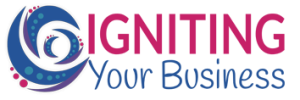If you're like many service-based entrepreneurs—especially those navigating a midlife career pivot—you might view your website's About page as a digital resume or a space to share your personal journey.
However, here's the truth: your About page isn't just about you. It's about how your story, expertise, and values align with your client's needs and aspirations.
In fact, the About page is often the second most visited page on a website, right after the homepage. Visitors land there seeking connection, credibility, and confirmation that you're the right person to help them.
Yet, many About pages miss the mark by focusing solely on the business owner's background without tying it back to the client's journey.
Let's talk about how to craft an About page that not only tells your story but also resonates deeply with your ideal clients, turning casual visitors into loyal customers.
Why the About Page Matters
Your About page serves as a bridge between your brand and your audience. It's where potential clients go to learn more about the person or people behind the business. According to a study by Nielsen Norman Group, users often visit the About page to assess the credibility and authenticity of a company.
For service-based businesses, especially those led by individuals with rich life and career experiences, the About page becomes a powerful tool to showcase how your unique journey equips you to solve your client's problems.
What Makes an Effective About Page?
1. Start with the Client in Mind
Begin your About page by addressing your client's pain points or aspirations.
Instead of launching into your biography, acknowledge the challenges your clients face and how your services provide solutions.
Example:
“You've built a successful career, but now you're ready to pivot and pursue your passion. Navigating this transition can be overwhelming, but you're not alone.”
2. Share Your ‘Why'
Explain why you do what you do, but frame it in a way that connects with your client's journey. Share the experiences that led you to this point and how they position you to assist others.
Example:
“After 20 years in corporate marketing, I realized my true passion was helping individuals like you – seasoned professionals ready for a new chapter – translate their expertise into thriving online businesses.”
3. Highlight Your Unique Value Proposition
Clearly articulate what sets you apart from others in your field. This could be your proprietary process, your unique blend of skills, or your personal approach to client relationships.
Example:
“Through my signature ‘Brand Reignite' framework, I guide clients step-by-step to clarify their message, build a compelling online presence, and attract their ideal audience.”
4. Include a Relatable Personal Touch
While the focus should be on the client, sharing a bit about your personal life can humanize your brand and foster connection. Mention hobbies, family, or interests that resonate with your audience.
Example:
“When I'm not strategizing with clients, you can find me hiking the trails of Georgia with my golden retriever, Max, or experimenting with new recipes in the kitchen.“
5. Incorporate Testimonials or Success Stories
Social proof adds credibility. Include brief testimonials or case studies that demonstrate how you've helped clients achieve their goals.
Example:
“Jane, a former corporate executive, launched her coaching business within three months of our collaboration and now enjoys a fulfilling career helping others navigate career transitions.”
6. Add a Professional Photo
A high-quality, friendly photo helps visitors feel connected to you. Ensure the image aligns with your brand's tone—approachable yet professional.
7. End with a Clear Call to Action (CTA)
Guide visitors on what to do next. Whether it's scheduling a consultation, downloading a free resource, or exploring your services, a clear CTA directs the user journey.
Example:
“Ready to embark on your next chapter? Schedule a free 30-minute discovery call to see how we can bring your vision to life.”
Common Mistakes to Avoid
- Making It All About You: While your story is important, always tie it back to how it benefits the client.
- Being Too Formal or Jargon-Heavy: Use conversational language that reflects your brand's personality.
- Lacking a CTA: Don't leave visitors wondering what to do next.
- Neglecting Visuals: A wall of text can be daunting. Break up content with images, headings, and bullet points.
Structuring Your About Page
Here's a suggested structure to guide you:
- Headline: A compelling statement that addresses the client's needs.
- Introduction: Briefly acknowledge the client's challenges and introduce how you can help.
- Your Story: Share your journey, focusing on experiences that equip you to serve your clients.
- Your Unique Approach: Detail your methods, frameworks, or philosophies.
- Personal Touch: Include relatable personal details to humanize your brand.
- Testimonials: Provide social proof of your effectiveness.
- Call to Action: Direct visitors to the next step.
Final Thoughts
Your About page is a pivotal page on your website. It's more than a biography; it's a strategic tool to build trust, showcase your value, and guide visitors toward becoming clients. By focusing on how your story intersects with your client's journey, you create a compelling narrative that resonates and converts.
Remember, connection is key. Be genuine, be relatable, and most importantly, be client-focused.






